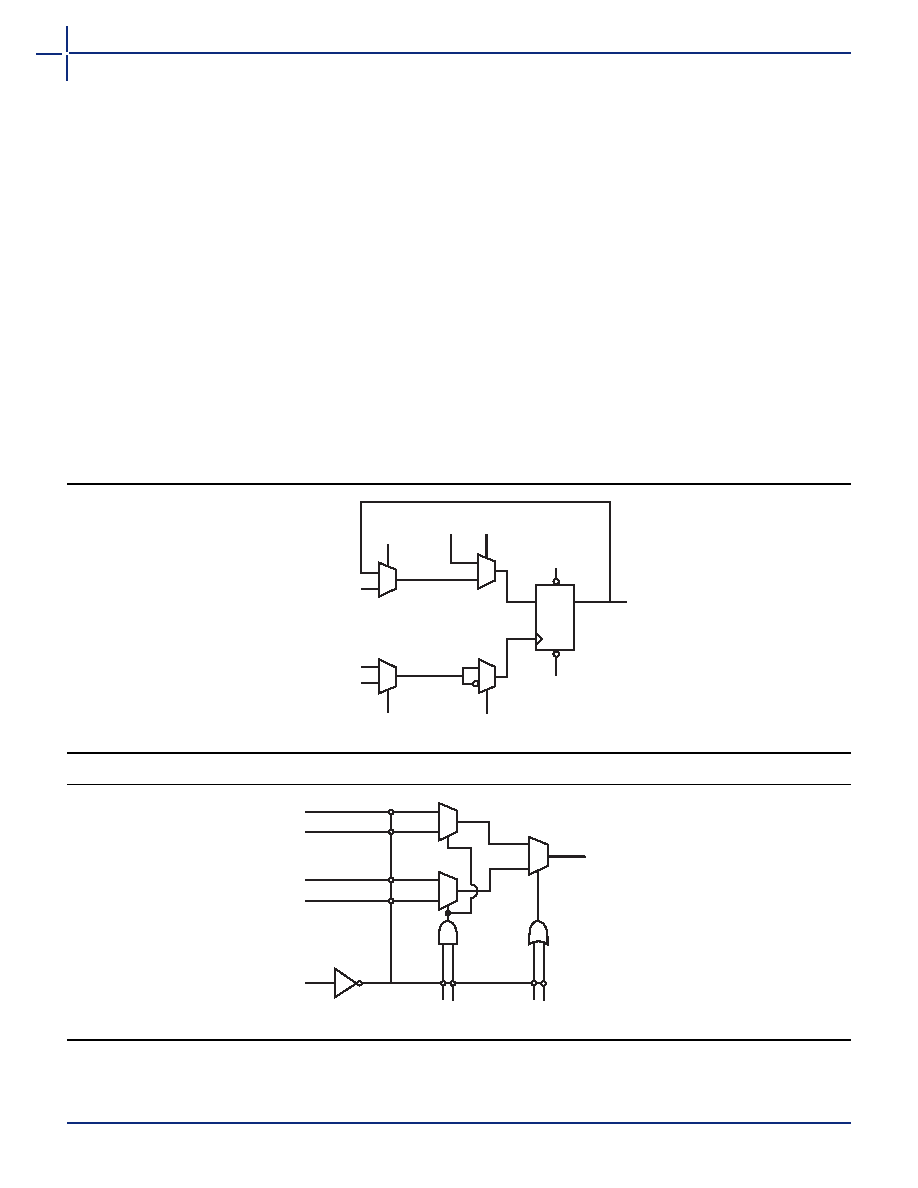- 您現(xiàn)在的位置:買(mǎi)賣(mài)IC網(wǎng) > PDF目錄4500 > A54SX08A-FFG144 (Microsemi SoC)IC FPGA SX 12K GATES 144-FBGA PDF資料下載
參數(shù)資料
| 型號(hào): | A54SX08A-FFG144 |
| 廠商: | Microsemi SoC |
| 文件頁(yè)數(shù): | 65/108頁(yè) |
| 文件大小: | 0K |
| 描述: | IC FPGA SX 12K GATES 144-FBGA |
| 標(biāo)準(zhǔn)包裝: | 160 |
| 系列: | SX-A |
| LAB/CLB數(shù): | 768 |
| 輸入/輸出數(shù): | 111 |
| 門(mén)數(shù): | 12000 |
| 電源電壓: | 2.25 V ~ 5.25 V |
| 安裝類(lèi)型: | 表面貼裝 |
| 工作溫度: | 0°C ~ 70°C |
| 封裝/外殼: | 144-LBGA |
| 供應(yīng)商設(shè)備封裝: | 144-FPBGA(13x13) |
第1頁(yè)第2頁(yè)第3頁(yè)第4頁(yè)第5頁(yè)第6頁(yè)第7頁(yè)第8頁(yè)第9頁(yè)第10頁(yè)第11頁(yè)第12頁(yè)第13頁(yè)第14頁(yè)第15頁(yè)第16頁(yè)第17頁(yè)第18頁(yè)第19頁(yè)第20頁(yè)第21頁(yè)第22頁(yè)第23頁(yè)第24頁(yè)第25頁(yè)第26頁(yè)第27頁(yè)第28頁(yè)第29頁(yè)第30頁(yè)第31頁(yè)第32頁(yè)第33頁(yè)第34頁(yè)第35頁(yè)第36頁(yè)第37頁(yè)第38頁(yè)第39頁(yè)第40頁(yè)第41頁(yè)第42頁(yè)第43頁(yè)第44頁(yè)第45頁(yè)第46頁(yè)第47頁(yè)第48頁(yè)第49頁(yè)第50頁(yè)第51頁(yè)第52頁(yè)第53頁(yè)第54頁(yè)第55頁(yè)第56頁(yè)第57頁(yè)第58頁(yè)第59頁(yè)第60頁(yè)第61頁(yè)第62頁(yè)第63頁(yè)第64頁(yè)當(dāng)前第65頁(yè)第66頁(yè)第67頁(yè)第68頁(yè)第69頁(yè)第70頁(yè)第71頁(yè)第72頁(yè)第73頁(yè)第74頁(yè)第75頁(yè)第76頁(yè)第77頁(yè)第78頁(yè)第79頁(yè)第80頁(yè)第81頁(yè)第82頁(yè)第83頁(yè)第84頁(yè)第85頁(yè)第86頁(yè)第87頁(yè)第88頁(yè)第89頁(yè)第90頁(yè)第91頁(yè)第92頁(yè)第93頁(yè)第94頁(yè)第95頁(yè)第96頁(yè)第97頁(yè)第98頁(yè)第99頁(yè)第100頁(yè)第101頁(yè)第102頁(yè)第103頁(yè)第104頁(yè)第105頁(yè)第106頁(yè)第107頁(yè)第108頁(yè)

SX-A Family FPGAs
1- 2
v5.3
Logic Module Design
The SX-A family architecture is described as a “sea-of-
modules” architecture because the entire floor of the
device is covered with a grid of logic modules with
virtually no chip area lost to interconnect elements or
routing. The Actel SX-A family provides two types of
logic
modules:
the
register
cell
(R-cell)
and
the
combinatorial cell (C-cell).
The R-cell contains a flip-flop featuring asynchronous clear,
asynchronous preset, and clock enable, using the S0 and S1
lines control signals (Figure 1-2). The R-cell registers feature
programmable clock polarity selectable on a register-by-
register basis. This provides additional flexibility while
allowing mapping of synthesized functions into the SX-A
FPGA. The clock source for the R-cell can be chosen from
either the hardwired clock, the routed clocks, or internal
logic.
The C-cell implements a range of combinatorial functions
of up to five inputs (Figure 1-3). Inclusion of the DB input
and its associated inverter function allows up to 4,000
different combinatorial functions to be implemented in a
single module. An example of the flexibility enabled by
the inversion capability is the ability to integrate a 3-input
exclusive-OR function into a single C-cell. This facilitates
construction of 9-bit parity-tree functions with 1.9 ns
propagation delays.
Module Organization
All C-cell and R-cell logic modules are arranged into
horizontal banks called Clusters. There are two types of
Clusters: Type 1 contains two C-cells and one R-cell, while
Type 2 contains one C-cell and two R-cells.
Clusters
are
grouped
together
into
SuperClusters
(Figure 1-4 on page 1-3). SuperCluster 1 is a two-wide
grouping of Type 1 Clusters. SuperCluster 2 is a two-wide
group containing one Type 1 Cluster and one Type 2
Cluster. SX-A devices feature more SuperCluster 1
modules than SuperCluster 2 modules because designers
typically require significantly more combinatorial logic
than flip-flops.
Figure 1-2 R-Cell
Figure 1-3 C-Cell
DQ
DirectConnect
Input
CLKA,
CLKB,
Internal Logic
HCLK
CKS
CKP
CLR
PRE
Y
Routed
Data Input
S0
S1
D0
D1
D2
D3
DB
A0 B0
A1 B1
Sa
Sb
Y
相關(guān)PDF資料 |
PDF描述 |
|---|---|
| RGM43DTMT | CONN EDGECARD 86POS R/A .156 SLD |
| M1A3P600-1PQG208 | IC FPGA 1KB FLASH 600K 208-PQFP |
| A3P600-1PQG208 | IC FPGA 1KB FLASH 600K 208-PQFP |
| M1A3P600L-PQG208 | IC FPGA 1KB FLASH 600K 208-PQFP |
| A40MX04-PL68I | IC FPGA MX SGL CHIP 6K 68-PLCC |
相關(guān)代理商/技術(shù)參數(shù) |
參數(shù)描述 |
|---|---|
| A54SX08A-FFG208 | 制造商:未知廠家 制造商全稱(chēng):未知廠家 功能描述:SX-A Family FPGAs |
| A54SX08A-FFG208A | 制造商:未知廠家 制造商全稱(chēng):未知廠家 功能描述:SX-A Family FPGAs |
| A54SX08A-FFG208B | 制造商:未知廠家 制造商全稱(chēng):未知廠家 功能描述:SX-A Family FPGAs |
| A54SX08A-FFG208I | 制造商:未知廠家 制造商全稱(chēng):未知廠家 功能描述:SX-A Family FPGAs |
| A54SX08A-FFG208M | 制造商:未知廠家 制造商全稱(chēng):未知廠家 功能描述:SX-A Family FPGAs |
發(fā)布緊急采購(gòu),3分鐘左右您將得到回復(fù)。